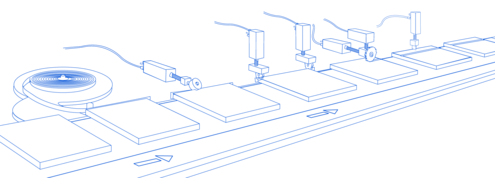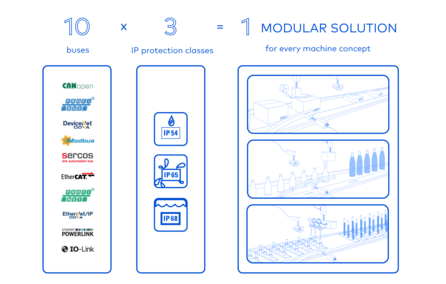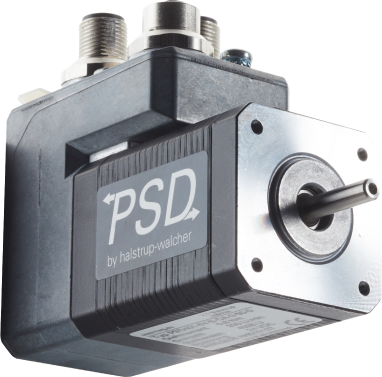Automatic format changeover
Flexibility and monitoring for easy changeover of the
Everyone is talking about the high flexibility factory: particularly since the emergence of the buzzword “Industry 4.0“, growing attention has focused on developing factory concepts that enable manufacturers to create specific products for their customers with the minimum additional investment of time and money. From packaging to bottling or woodworking: every year, companies are facing growing pressure to be able to manufacture new formats at extremely short notice.
Helping format changeover helpers
The practical production implications are essentially identical for everyone from contract fillers, who have to adapt new package sizes continuously, to in-house production divisions of major concerns such as Procter&Gamble or the Coca-Cola Company. It is a daily balancing act between the dual demands of flexibility and cost pressure.
Successful machine tool builders have therefore recognised that their secondary core competence (alongside their primary function of building machines for packaging, bottling, cutting etc) is to master the format changeover and conversion processes of their machines. This takes place on two different levels:
Level 1: Format changeovers in the customer‘s manufacturing process
The machine must offer the flexibility required to manufacture all currently known formats at short notice and with the maximum level of automation – and ideally all the possible future formats that the customer‘s marketing department has not yet imagined.

Level 2: Conversion of the machine concept by the machine tool builder during the design process
The design produced by machine tool builder must be flexible enough to respond to the individual wishes of his customer and the market. Once again, wherever possible, the goal is to have the flexibility to cope not only with the familiar challenges of today but also with the unknown challenges of the future.
Consequently, components that assist the machine tool builders on both these levels are of strategic importance. This applies especially to so-called positioning systems. These are intelligent drives, which are used in the implementation of automated format changeover systems. Equipped with a motor, gearbox, bus communication and an absolute encoder, they automatically move guide rails, tools or inspection cameras to the new position required for the new format. Positioning systems thus play a key role in the type of applications described under “Level 1“.
“Level 2“ sorts the wheat from the chaff. Some positioning systems require a proprietary bus coupler that allows them to be used with the many bus communication systems (field buses) available on the market. This approach is less than ideal as it requires more space and generates greater costs – particularly as special cables are also required for connecting the proprietary bus coupler.
Other systems integrate a position display directly on the device itself. This forces the designer to find some installation point that enables the user to access the display and severely restricts the modularity and flexibility of the machine design.
Flexibility and monitoring for automatic format changeover

Our positioning systems PSE/PSS/PSW
In contrast, halstrup-walcher puts its trust in extremely compact units, which are available in a very extensive range of modular systems:
- Torques from 1 to 25 Nm
- Selection of IP protection types: IP 54, IP 65, IP 68
- Selection of on-board bus communication protocols: Profibus, Profinet, CANopen, Ethernet-IP, Modbus, Sercos, EtherCat, DeviceNet, Powerlink and IO-Link
The key advantage:
when changing the IP protection type or the bus communication, all relevant connection dimensions remain the same. This enables the machine builder to rebuild an existing machine in accordance to the customer‘s wish very quickly.
Automatic format changeover with IO-Link
Of the field buses, IO-Link plays a particularly important role. Actually, IO-Link is not a bus communication but a “peer to peer“ connection which bridges the final metre between a field bus and the sensors / actuators. The purpose of this exercise is to be able to use the same communication (IO-Link) for the sensor and actuator in every version of the machine while the gateway permits the use of any customer-specific field bus. This approach is an optimum solution for accommodating the wide range of sensors and actuators.
Until now, IO-Link has been used predominantly by sensor manufacturers. The inclusion of IO-Link in “PSE / PSS / PSW“ positioning systems makes halstrup-walcher the first supplier of decentralised actuator systems that also supports this concept. The system provides the best possible adaptability in terms of the criteria described above under “Level 2“ – and simultaneously offers optimum support for the fast, precision positioning tasks stated under “Level 1“. The following details will be of interest to practical engineers:
- The PSE / PSS / PSWpositioning system with IO-Link is a single cable solution that uses the same cable for the power supply and data transmission. Standard, unshielded M12 cables can be used.
- The so-called “time stamp“ process is supported. This guarantees that the format changeover is always started at the desired time and the control module can transmit the corresponding run commands in good time – the PSE / PSS / PSW positioning system with IO-Link is then even able to start when the time stamp has been reached. This is very useful, especially for synchronising the start of format changeover processes.
The ability to change formats and convert machinery on both these levels will be a decisive factor in determining the competitiveness of machine tool builders over the coming years. Factors that once affected only the major companies in the sector are increasingly becoming the focus of attention for medium sized machine tool builders. To quote Albert Einstein: “Life is like riding a bicycle. If you stand still, you fall over.“

Our drives
We are specialists for individual positioning systems and drive solutions.
Get to know our product variety.



